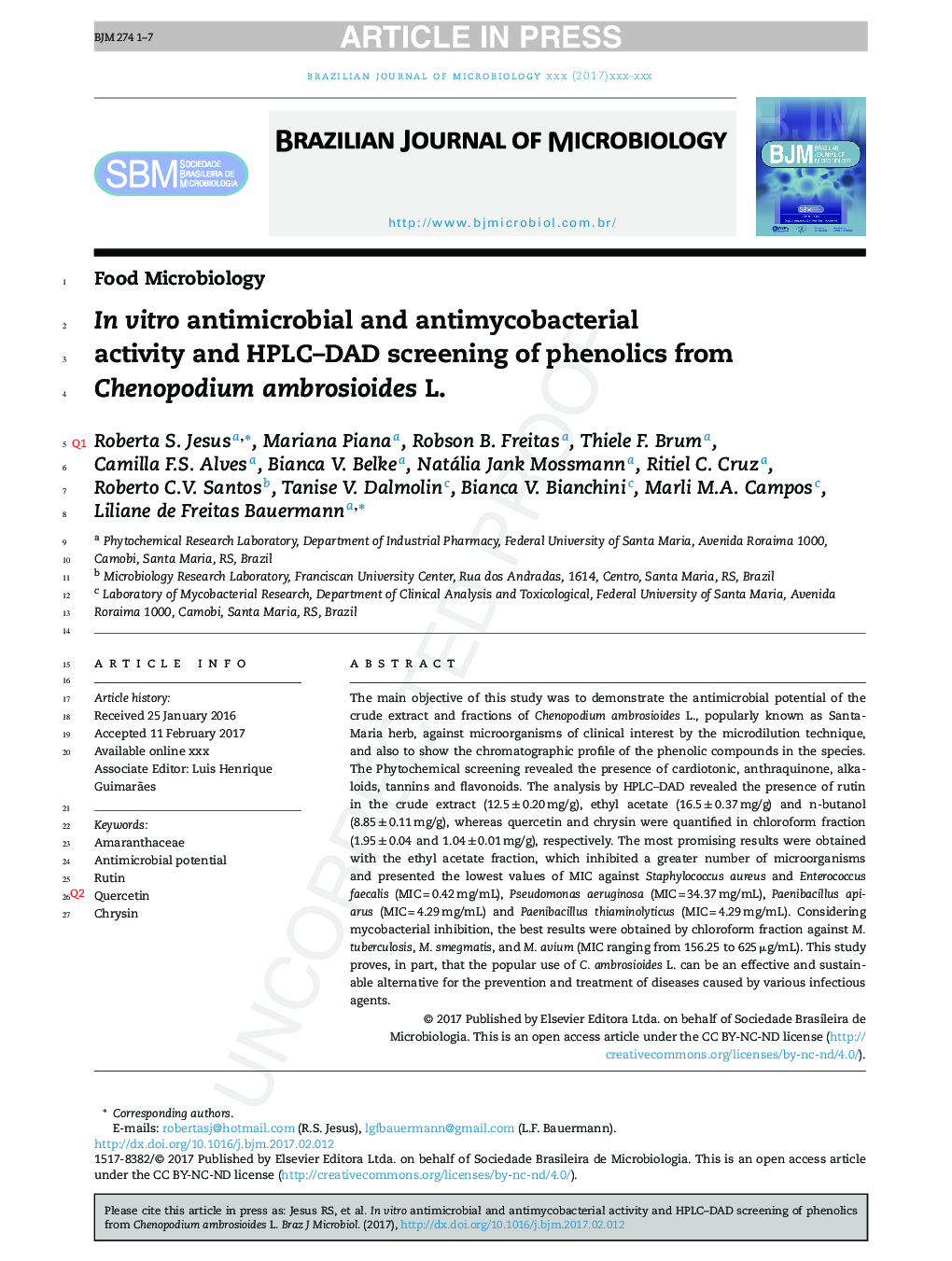| Article ID | Journal | Published Year | Pages | File Type |
|---|---|---|---|---|
| 8842501 | Brazilian Journal of Microbiology | 2018 | 7 Pages |
Abstract
The main objective of this study was to demonstrate the antimicrobial potential of the crude extract and fractions of Chenopodium ambrosioides L., popularly known as Santa-Maria herb, against microorganisms of clinical interest by the microdilution technique, and also to show the chromatographic profile of the phenolic compounds in the species. The Phytochemical screening revealed the presence of cardiotonic, anthraquinone, alkaloids, tannins and flavonoids. The analysis by HPLC-DAD revealed the presence of rutin in the crude extract (12.5 ± 0.20 mg/g), ethyl acetate (16.5 ± 0.37 mg/g) and n-butanol (8.85 ± 0.11 mg/g), whereas quercetin and chrysin were quantified in chloroform fraction (1.95 ± 0.04 and 1.04 ± 0.01 mg/g), respectively. The most promising results were obtained with the ethyl acetate fraction, which inhibited a greater number of microorganisms and presented the lowest values of MIC against Staphylococcus aureus and Enterococcus faecalis (MIC = 0.42 mg/mL), Pseudomonas aeruginosa (MIC = 34.37 mg/mL), Paenibacillus apiarus (MIC = 4.29 mg/mL) and Paenibacillus thiaminolyticus (MIC = 4.29 mg/mL). Considering mycobacterial inhibition, the best results were obtained by chloroform fraction against M. tuberculosis, M. smegmatis, and M. avium (MIC ranging from 156.25 to 625 μg/mL). This study proves, in part, that the popular use of C. ambrosioides L. can be an effective and sustainable alternative for the prevention and treatment of diseases caused by various infectious agents.
Related Topics
Life Sciences
Immunology and Microbiology
Applied Microbiology and Biotechnology
Authors
Roberta S. Jesus, Mariana Piana, Robson B. Freitas, Thiele F. Brum, Camilla F.S. Alves, Bianca V. Belke, Natália Jank Mossmann, Ritiel C. Cruz, Roberto C.V. Santos, Tanise V. Dalmolin, Bianca V. Bianchini, Marli M.A. Campos,
